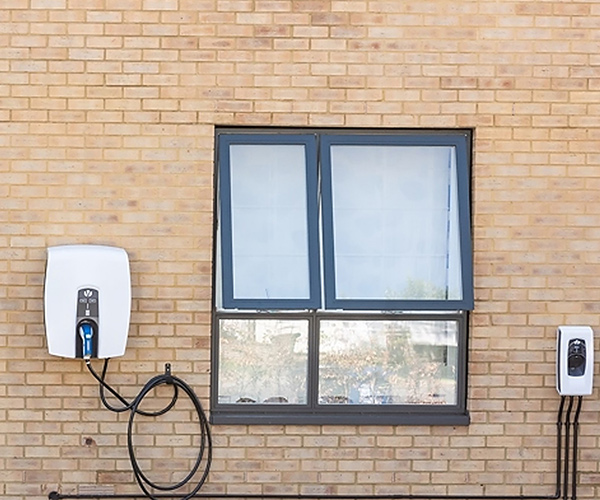
The world of EV charging is an exciting one, but there’s no doubt it can be confusing at times. With terms like V2X, V2G and V2H being bandied around, it can be difficult to understand exactly what they mean for you and the future of intelligent charging. But fear not — we’re here with our V2X Lead, Krunal Kumpavat, who breaks down what bi-directional charging is, the differences between V2G and V2H, and the role this technology plays in the journey to zero emissions.
What is V2X?
Before we discuss what V2X is, here’s some food thought. Electric vehicles are equipped with a sizeable battery, with several times the storage capacity of a home battery, for example. Couple that with the fact that an average car or van is parked and idle for over 95% of the day. What if, when the vehicle is not being used, the battery could continue to be utilised? That’s where V2X comes in!
V2X, which stands for ‘Vehicle-to-Everything’, is bi-directional charging technology that allows energy to be passed to or from an electric vehicle (EV) battery. In other words, as well as being able to charge your car or van as normal, you can also discharge energy stored in your car’s battery to power electrical devices in your home, office buildings, or the national grid.
As the name suggests, ‘Vehicle-to-Everything’ is the overall term for different forms of bi-directional technology, including Vehicle-to-Grid (V2G), Vehicle-to-Building (V2B), Vehicle-to-Home (V2H) and Vehicle-to-Load (V2L).
Here at Indra, our vision is to create a sustainable energy ecosystem by integrating vehicles, their charging capacity and the grid through pioneering technology to enable cheaper, more sustainable charging. That’s why our expert team is currently developing world-leading V2X technology.
Sounds exciting, right? But what are the benefits and differences between two of the most common types of bidirectional charging - V2G and V2H?
V2G Explained
With millions of EVs expected on the roads in the next decade, the demand for electricity is going to grow and put extra pressure on the grid.
At the same time, the energy sector is undergoing big changes as it moves to decarbonise and use a greater volume of greener energy. Renewable energy, however, is unpredictable and intermittent by nature and cannot simply be generated at will.
This means we need to find innovative solutions to provide more flexibility to the grid to ensure it can meet increasing electricity consumption and maximise the use of renewable energy. That’s where V2G comes in.
Vehicle-to-Grid (V2G) technology enables users to send energy from their EV battery back to the grid – in order to support the electricity network when its needed most, and even be paid to do so.
By discharging the energy from vehicle batteries at key times, when electricity demand is at its highest, we can reduce the reliance on fossil-fuelled power generation. EVs can then be charged up during off-peak hours when it is cheaper and greener to do so.
By harnessing the collective power of lots of V2G-enabled EVs, the transition to a smarter, more sustainable electricity system can be accelerated.
It’s easy to see why this technology has received huge interest and many consider it a game-changer in the electric vehicle and energy management space. This two-way energy transfer not only offers a greater deal of flexibility, but also opens up new income streams for drivers, fleet operators, and even vehicle manufacturers; Win, win!
V2H Explained
But the benefits of this technology don’t stop there; we’re also trialling the same bi-directional technology between the car and home — vehicle-to-home (V2H). This means that, instead of exporting surplus energy from your car back to the grid, you can use it to power your home instead, reducing your carbon footprint and energy bills in the process.
V2H enables you to use your EV as your own personal energy storage facility. With V2H, you can discharge energy to meet the electricity needs of your home – and avoid the need to buy electricity from the grid when prices are high. You can then charge your vehicle when prices are cheaper – or even take advantage of free solar energy if you have solar PV panels.
V2H users can effectively use their car to cook their breakfast, run their washing machine and even heat their shower!
We believe that encouraging conscious energy consumption and greater user control is key to creating a more sustainable energy future whilst also helping to reduce energy costs.